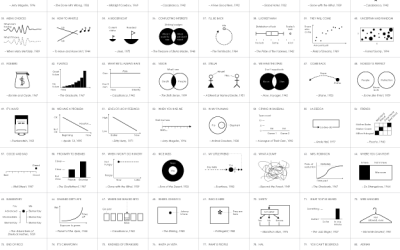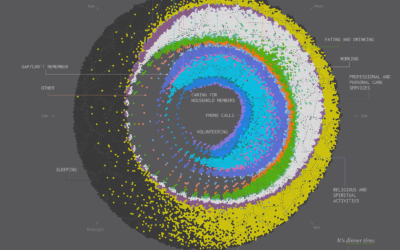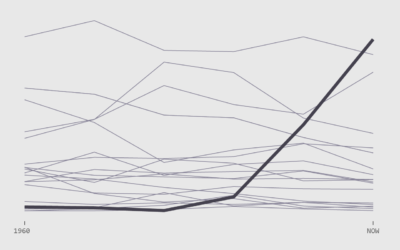A Day in the Life: Women and Men
Using the past couple of years of data from the American Time Use Survey, I simulated a working day for men and women to see how schedules differ. Below shows the results. Each dot represents a person, where cyan represents women and orange represents men.
A Day in the Life of Women and Men
This is a simulation, based on data from the American Time Use Survey.
Household care refers to household work, such as cleaning, cooking, and laundry, as well as taking care of others (children, for example). As you might expect, a higher percentage of women than men do this activity throughout the day.
I was kind of surprised that the split for paid work isn’t closer to 50-50. The distribution of women and men is almost the inverse of the distribution for household care. But that seems to make sense, if we assume women tend to reduce work hours to take care of more household responsibilities.
I also expected leisure time to lean more towards men in the evening hours. It did, but not as much as I thought it would. I’ll have to look at that more closely.
A Day in the Life of Americans
See the day in more detail.
Notes
- The data comes from the 2016-2017 American Time Use Survey. I downloaded the microdata through IPUMS. It’s the dataset that keeps on giving.
- I analyzed and processed the data in R. I also ran the simulations in R.
- I used D3.js to make the chart above. Here’s the tutorial from a while back. I had hoped to port my previous code to at least D3.js v4, but my revised implementation was sluggish. So I went back to v3.
Become a member. Support an independent site. Get extra visualization goodness.
See What You Get







